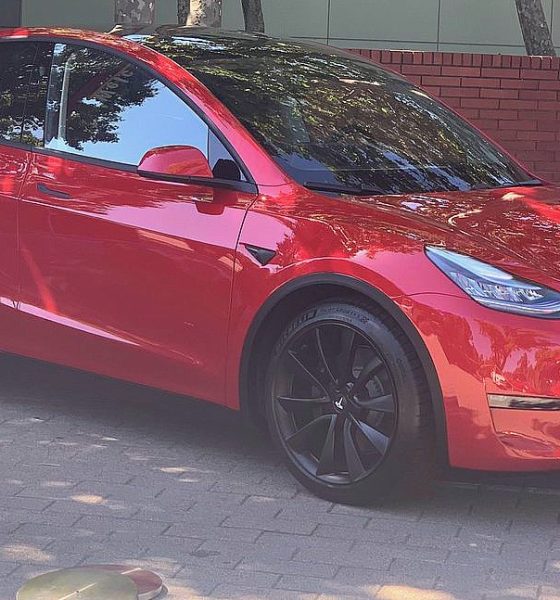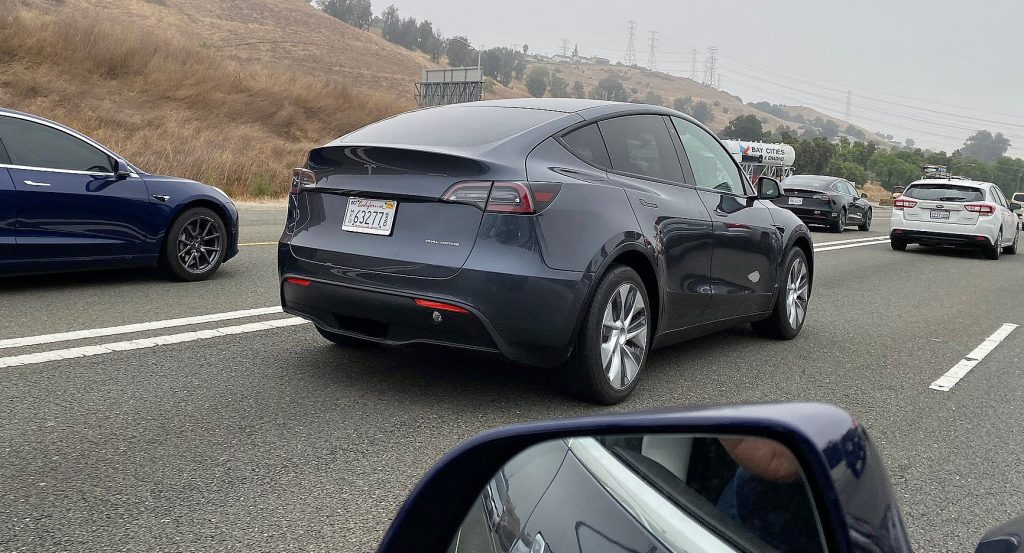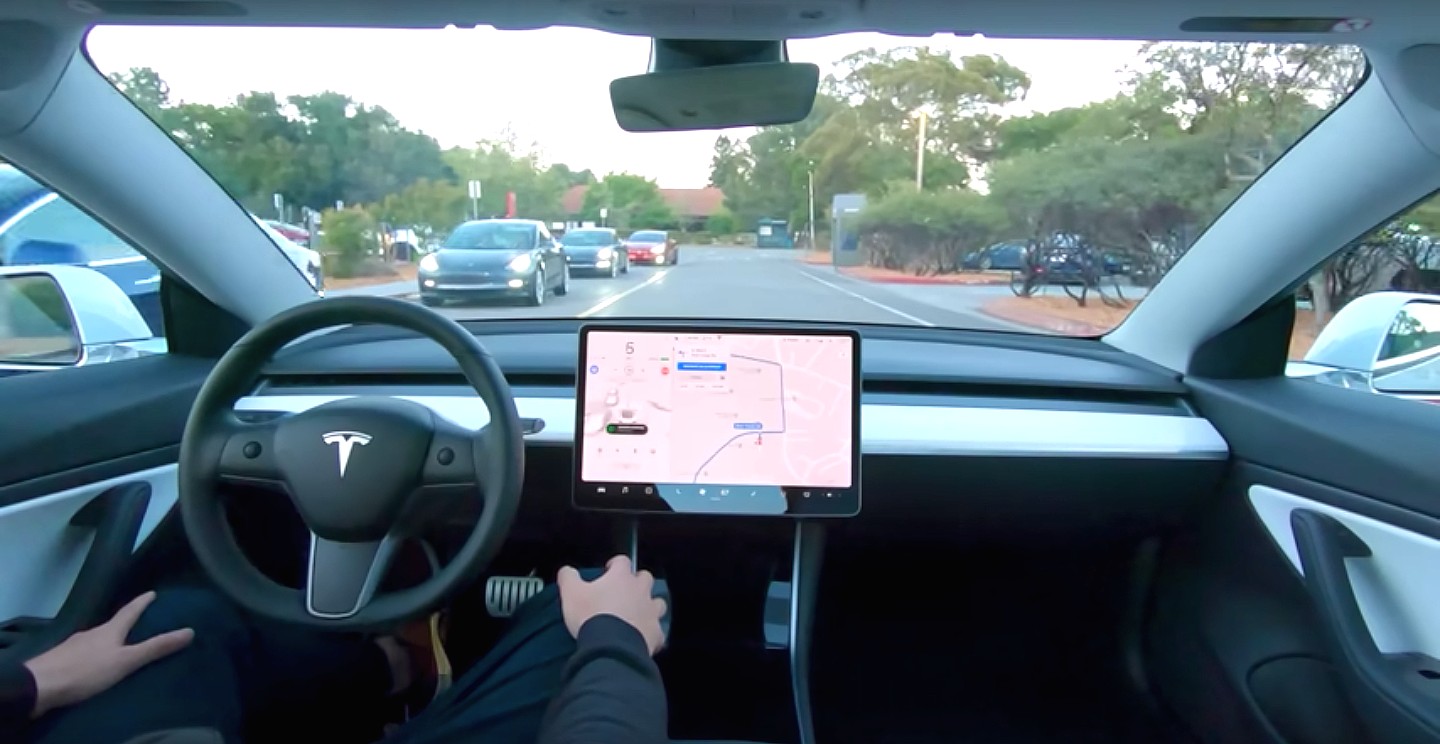

News
Tesla’s more experienced rivals are strangely making way for the Model Y
Something strange is happening in the crossover EV segment. Despite beating the Tesla Model Y to the market, European all-electric SUVs appear to be making way for the Silicon Valley-made disruptor. This shows that while Tesla may be entering the lucrative crossover segment later than its rivals, it will be doing so with a vehicle that does not seem to have a lot of willing challengers.
It should be noted that the Model Y is designed to compete in the auto industry’s most cutthroat segment. Dominated by iconic, hyper-reliable vehicles like the Honda CR-V and the Toyota RAV-4, the crossover market is as lucrative as it is competitive. In a way, crossovers are usually bang-for-the-buck cars: larger and more spacious than sedans, and at a price point that does not break the bank.
The Model Y is all these things. With 75% of the vehicle being the same as the Model 3 sedan, the Model Y is coming to the market with all of Tesla’s experience in production and tech that it learned over the past years. Its performance is second to none, with its quickest variant hitting 60 mph in just 3.5 seconds. It’s also quite larger than its Model 3 siblings, as it’s capable of seating seven passengers instead of five (provided that the two people on the rear seats are small, of course).

There is no doubt that the Model Y will likely capture a lot of the EV market. Tesla is such a strong force in the EV segment that its entry in the crossover market may be embraced just as well, if not better, than the Model 3. If one were to prepare for the arrival of a competitor then, it would be a great idea to get the jump on the Model Y, beating it to the market and saturating Tesla’s target demographic before the vehicle gets released.
In this sense, Tesla’s rivals somewhat succeeded. Jaguar unveiled the I-PACE way before the wraps were taken off the Model Y. The same was true for the Audi e-tron 55. Each vehicle was released to the market before sightings of Model Y release candidates became the norm. Yet, despite the hype generated for each vehicle and their actual merits, none of these all-electric SUVs put a dent on the US’ all-electric market.
And it’s not for lack of recognition either. The Jaguar I-PACE was so well received that it literally got over 60 awards, making it one of the most highly-decorated production cars in history. The Audi e-tron got its own fair share of fans too. Consumer Reports’ initial impressions of the e-tron were highly-positive, with the organization praising the vehicle for its posh interior and its looks. CR Deputy Content Editor Jon Linkov even remarked that that contrary to the snap of acceleration in Tesla’s electric cars like the Model S, the Audi e-tron has “more of an elegant pull-away.”

Yet, despite these, both the I-PACE and the e-tron have seemingly hit a ceiling. Estimates point to Jaguar selling 2,418 I-Pace in the US this year through November, and Audi selling 4,623 e-tron SUVs. The Tesla Model 3? Around 111,650 in the same period, as per Bloomberg. These sales figures were so stark that recently, Mercedes-Benz announced that the EQC’s release in the US will be delayed by a year. In a way, it appears that two Model Y challengers failed against the Model 3, and one seemed to be all-too-willing to give way for the upcoming vehicle.
This may end up being a costly mistake, especially on Mercedes-Benz’s part. By the time the EQC arrives in the US, the Model Y will likely be on the roads. And if the Model 3’s dominance of the electric car segment is any indication, Tesla might very well be poised to come out on top once more. With Elon Musk and Tesla seemingly being more cautious, understated vehicles like the Model Y, which have so much potential but seemingly receive so little attention, are the most dangerous for competitors.
Granted, one could argue that the I-PACE, the e-tron, and the EQC are more of the more expensive Model X’s competitors considering their prices. While this is true, all three vehicles are actually closer in size to the Model Y than the Model X. Even their interior space are smaller than the X, making them more of a Model Y rival in terms of features and spaciousness.

News
Tesla Giga Berlin is still ramping production to meet Model Y demand: plant manager
Tesla Gigafactory Berlin has expanded to two full shifts, as per the facility’s plant manager, and a lot of it is due to Model Y demand.

Tesla Gigafactory Berlin has expanded to two full shifts, as per the facility’s plant manager, and a lot of it is due to Model Y demand. While registrations in some countries such as Sweden have fallen sharply this year, the company’s sales in other key territories have been rising.
Giga Berlin shifts to two shifts
Giga Berlin factory manager André Thierig told the DPA that the facility has been running two shifts since September to manage a surge in global orders. And due to the tariff dispute with the United States, vehicles that are produced at Giga Berlin are now being exported to Canada.
“We deliver to well over 30 markets and definitely see a positive trend there,” Thierig said.
Despite Giga Berlin now having two shifts, the facility’s production still needs to ramp up more. This is partly due to the addition of the Tesla Model Y Performance and Standard, which are also being produced in the Grunheide-based factory. Interestingly enough, Giga Berlin still only produces the Model Y, unlike other factories like Gigafactory Texas, the Fremont Factory, and Gigafactory Shanghai, which produce more than one type of vehicle.
Norway’s momentum
Norway, facing an imminent tax increase on cars, has seen a historic spike in Tesla purchases as buyers rush to secure deliveries before the change takes effect, as noted in a CarUp report. As per recent reports, Tesla has broken Norway’s all-time annual sales record this month, beating Volkswagen’s record that has stood since 2016.
What is rather remarkable is the fact that Tesla was able to achieve so much in Norway with one hand practically tied behind its back. This is because the company’s biggest sales draw, FSD, remains unavailable in the country. Fortunately, Tesla is currently hard at work attempting to get FSD approved for Europe, a notable milestone that should spur even more vehicle sales in the region.
News
Tesla launches crazy Full Self-Driving free trial: here’s how you can get it

Tesla is launching a crazy Full Self-Driving free trial, which will enable owners who have not purchased the suite outright to try it for 30 days.
There are a handful of stipulations that will be needed in order for you to qualify for the free trial, which was announced on Thursday night.
Tesla said the trial is for v14, the company’s latest version of the Full Self-Driving suite, and will be available to new and existing Model S, Model 3, Model X, Model Y, and Cybertruck owners, who will have the opportunity to try the latest features, including Speed Profiles, Arrival Options, and other new upgrades.
🚨 Tesla is launching a free 30-day trial of Full Self-Driving in North America for owners.
It includes every model, but you need v14.2 or later, and you cannot have already purchased the suite outright. https://t.co/8CNmxxOkVl
— TESLARATI (@Teslarati) November 27, 2025
You must own one of the five Tesla models, have Full Self-Driving v14.2 or later, and have an eligible vehicle in the United States, Puerto Rico, Mexico, or Canada.
The company said it is a non-transferable trial, which is not redeemable for cash. Tesla is reaching out to owners via email to give them the opportunity to enable the Full Self-Driving trial.
Those who are subscribed to the monthly Full Self-Driving program are eligible, so they will essentially get a free month of the suite.
Once it is installed, the trial will begin, and the 30-day countdown will begin.
Tesla is making a major push to increase its Full Self-Driving take rate, as it revealed that about 12 percent of owners are users of the program during its recent earnings call.
Tesla CFO Vaibhav Taneja said during the call:
“We feel that as people experience the supervised FSD at scale, demand for our vehicles, like Elon said, would increase significantly. On the FSD adoption front, we’ve continued to see decent progress. However, note that the total paid FSD customer base is still small, around 12% of our current fleet.”
Earlier today, we reported on Tesla also launching a small-scale advertising campaign on X for the Full Self-Driving suite, hoping to increase adoption.
Tesla Full Self-Driving warrants huge switch-up on essential company strategy
It appears most people are pretty content with the subscription program. It costs just $99 a month, in comparison to the $8,000 fee it is for the outright purchase.
News
Tesla Full Self-Driving warrants huge switch-up on essential company strategy

Tesla Full Self-Driving has warranted a huge switch-up on an essential company strategy as the automaker is hoping to increase the take rate of the ADAS suite.
Unlike other automotive companies, Tesla has long been an outlier, as it has famously ditched a traditional advertising strategy in favor of organic buzz, natural word-of-mouth through its production innovation, and utilizing CEO Elon Musk’s huge social media presence to push its products.
Tesla has taken the money that it would normally spend on advertising and utilized it for R&D purposes. For a long time, it yielded great results, and ironically, Tesla saw benefits from other EV makers running ads.
Tesla counters jab at lack of advertising with perfect response
However, in recent years, Tesla has decided to adjust this strategy, showing a need to expand beyond its core enthusiast base, which is large, but does not span over millions and millions as it would need to fend off global EV competitors, which have become more well-rounded and a better threat to the company.
In 2024 and 2025, Tesla started utilizing ads to spread knowledge about its products. This is continuing, as Full Self-Driving ads are now being spotted on social media platforms, most notably, X, which is owned by Musk:
NEWS: Tesla is running paid advertisements on X about FSD (Supervised). Here’s an ad they started running yesterday: pic.twitter.com/IHVywLMyTd
— Sawyer Merritt (@SawyerMerritt) November 25, 2025
Interestingly, Tesla’s strategy on FSD advertising is present in Musk’s new compensation package, as the eleventh tranche describes a goal of achieving 10 million active paid FSD subscriptions.
Full Self-Driving is truly Tesla’s primary focus moving forward, although it could be argued that it also has a special type of dedication toward its Optimus robot project. However, FSD will ultimately become the basis for the Robotaxi, which will enable autonomous ride-sharing across the globe as it is permitted in more locations.
Tesla has been adjusting its advertising strategy over the past couple of years, and it seems it is focused on more ways to spread awareness about its products. It will be interesting to see if the company will expand its spending even further, as it has yet to put on a commercial during live television.
We wouldn’t put it out of the question, at least not yet.









